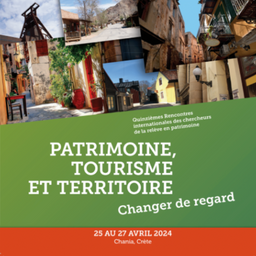Heritage by and for tourism? Tensions surrounding textiles in Peru
My Session Status
Like the textile tradition of the Peruvian island of Taquile, inscribed in 2008 on UNESCO’s Representative List of the Intangible Cultural Heritage of Humanity, Peruvian weaving is seen by local populations and tourists alike as a central element of the country’s heritage. However, only a “pre-Hispanic” part of textile production has really been heritagized, to the detriment of a whole range of “a-patrimonial” weaving practices.
Peru’s tourist influx is mainly based on ethnotourism. Idealizing the local heritage, tourists buy “a-patrimonial” textiles as souvenirs of their trip. Far from being neglected, this production is an integral part of Peru’s tourist imagination, at the crossroads of a desire for heritage and tourism strategies. We attempt to compare the tactics mobilized to grasp the nuances of the relationship between tourism and heritage around these artifacts.
The “Andean” textile is a malleable category that has found its place in national and tourist imaginations. This textile is mainly defined by its attachment to local folklore: it is produced in indigenous farming communities, and its techniques and iconography are linked to the pre-Hispanic period. The patrimonialization of this category, notably through its presentation in museum institutions, offers tourist legitimacy and enables those who produce it to generate income. But the heritage definition of Peruvian textiles does not cover the entirety of this same category in the tourist imagination.
Indeed, the ethnic symbolism sought by tourists depends on criteria that are not really heritage-related. Thus, they mainly buy chemically dyed fabrics, with geometric or local flora and fauna motifs, at lower prices. Heritage textiles, for their part, are made from less vivid natural dyes, with specific motifs linked to geographical origins. Technically speaking, heritage textiles are produced on backstrap looms by women in rural areas, but a large proportion of textiles on the markets are produced on treadle looms, tools imported by Spanish colonists and more or less automated. These producers are invisible and their products are not considered “authentic,” yet they dominate the Peruvian textile market, both for tourists and the local population.
These producers of “a-patrimonial” textiles therefore implement strategies either to obtain the heritage label, or to foil it on the tourist market. A substantial proportion of the textiles on the market take up pre-Hispanic iconography while modernizing it, using new materials, bright colours, and innovative motifs. At the same time, the weavers themselves claim to be part of this centuries-old tradition.
At the same time, artisans are implementing strategies to meet tourist demand, leaving aside the heritage aspect and favouring other arguments. For example, the Ayacucho artisans interviewed for our ethnographic study insisted on local craftsmanship, low costs, and the environmental friendliness of the products they use to defend their textiles, as opposed to legitimized, heritage textiles.

Discussion